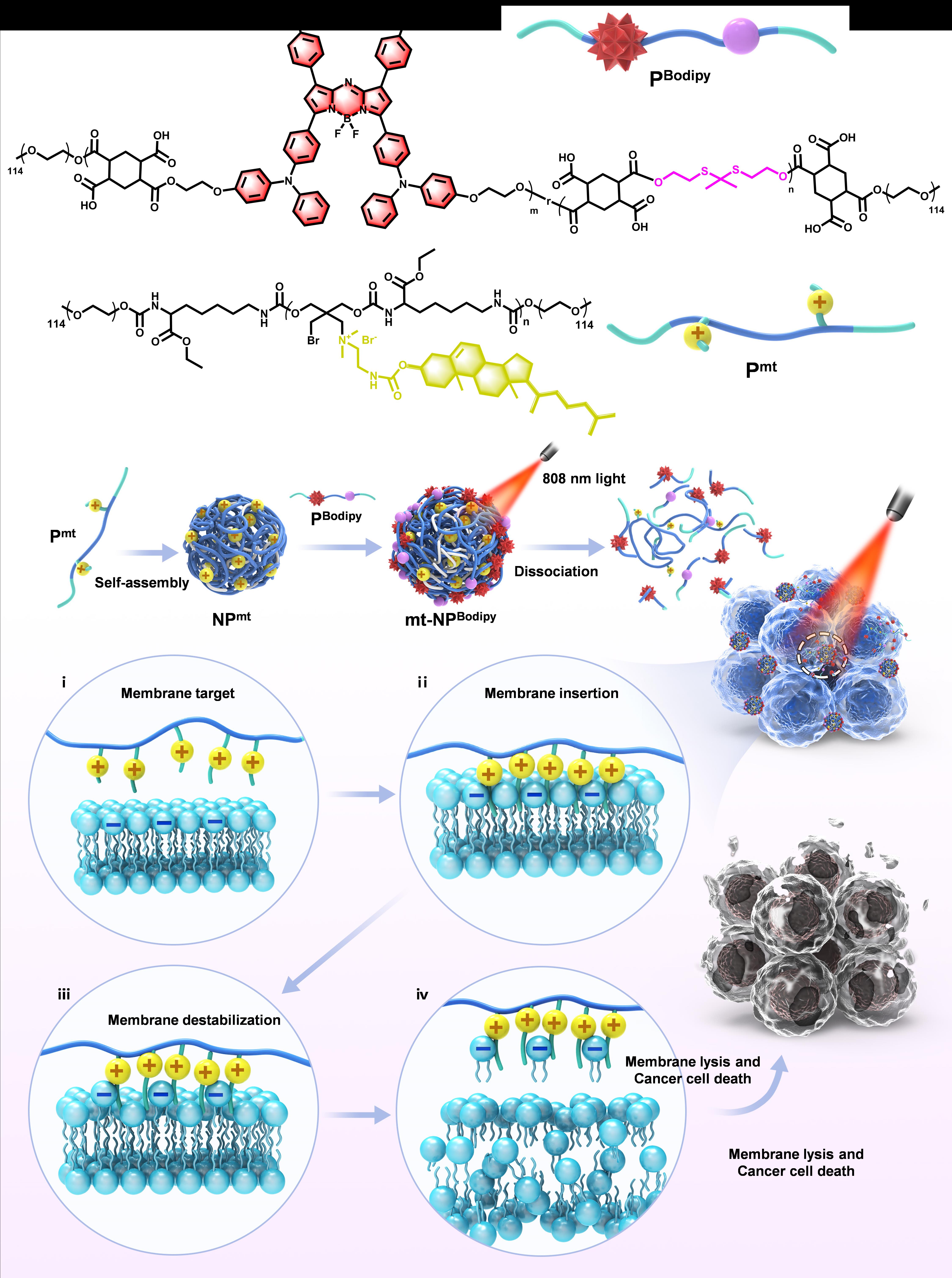A novel cell membrane-targeted polymer nanoparticle inhibits breast cancer growth in mice by disrupting cell membranes
Dongsheng Tang, Minhui Cui, Bin Wang, Ganghao Liang, Hanchen Zhang, Haihua Xiao
Nat. Commun., 2024, 15, 6026
Chemotherapy and molecular targeted therapy remain the primary clinical cancer treatment modalities. However, these treatment modalities are often associated with limitations such as severe toxicities, unsatisfactory therapeutic efficacy, and the development of multidrug resistance in tumors. To overcome the limitations of conventional anticancer drugs, polymer-drug conjugates, and polymer-based drug delivery systems have been extensively developed in recent years. However, these cationic polymers can also rapidly interact with negatively charged cell membranes of normal cells in healthy tissues and organs in vivo, resulting in significant toxic side effects and hindering their application in vivo.
In a recent study published in Nature Communications, a research group led by Professor Xiao Haihua at the Institute of Chemistry of the Chinese Academy of Sciences (ICCAS) developed a membrane-targeted polymer nanoparticle that inhibits the growth of breast cancer.
The researchers first designed a cell membrane-targeting cationic polymer with antineoplastic activity (Pmt) and a second near-infrared (NIR-II) fluorescent biodegradable polymer with photosensitizer Bodipy units and reactive oxygen species (ROS) responsive thioketal bonds (PBodipy). Subsequently, these two polymers can self-assemble into antineoplastic nanoparticles (denoted mt-NPBodipy) which could further accumulate at the tumor and destroy cell membranes through electrostatic interactions, resulting in cell membrane destabilization. Meanwhile, the photosensitizer Bodipy produces ROS to induce damage to cell membranes, proteins, and DNAs to kill cancer cells concertedly, finally resulting in cell membrane lysis and cancer cell death. This work highlights the use of near-infrared light to spatially and temporarily control cationic polymers for photodynamic therapy, photoimmunotherapy, and NIR-II fluorescence for bio-imaging.

